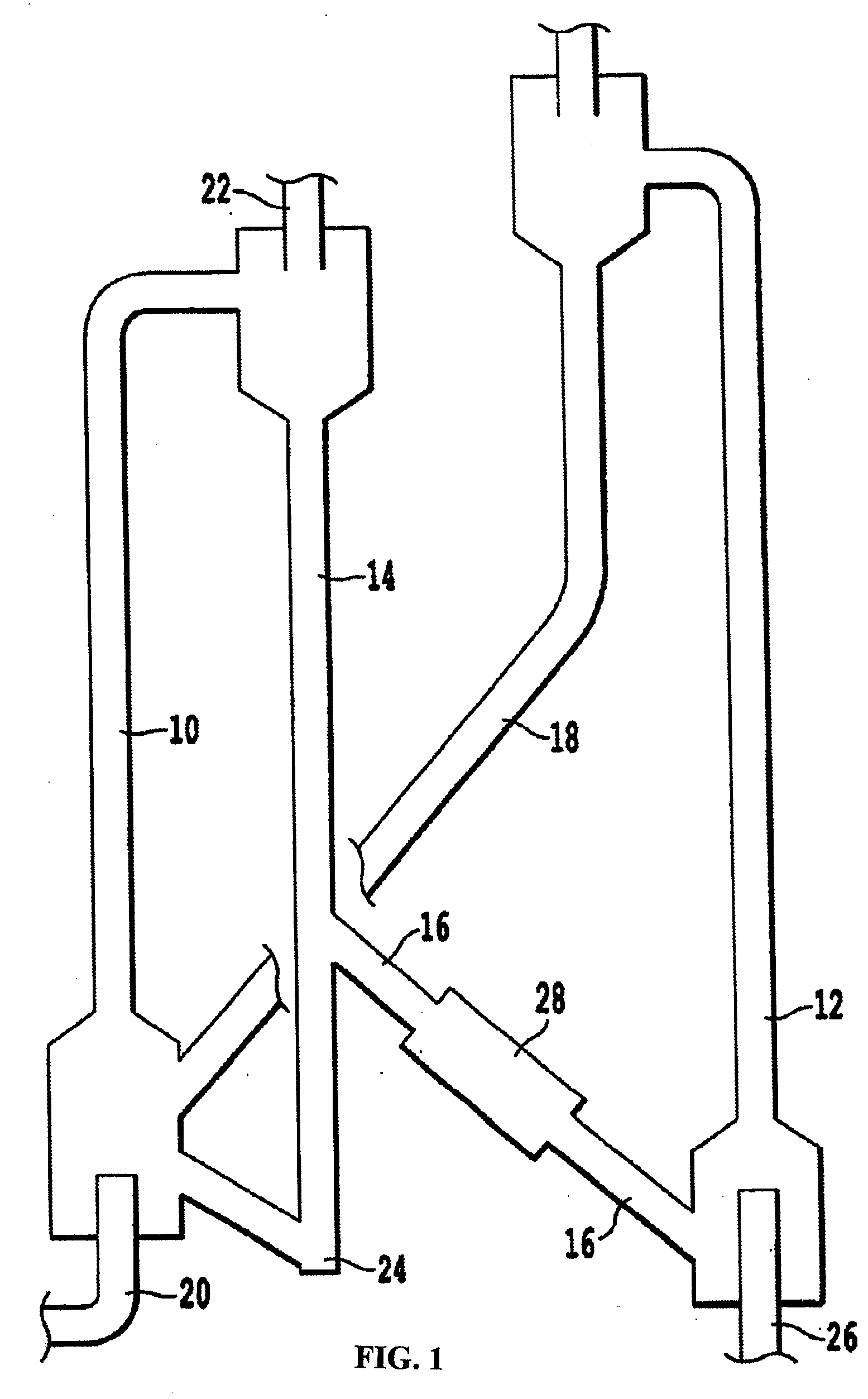Zinc oxide-based sorbents and processes for preparing and using same
- Summary
- Abstract
- Description
- Claims
- Application Information
AI Technical Summary
Benefits of technology
Problems solved by technology
Method used
Image
Examples
example 1
[0055] Preparation of sorbent materials was conducted as follows. 1841.6 g of Al2(NO3)3.9H2O and 1279.8 g of Zn(NO3)2.6H2O was dissolved in deionized (DI) water and the solution was brought up to 4 liters by addition of DI water. In a second container, enough ammonium hydroxide and DI water was added to generate a 14.8 N solution. Two pumps were used to feed the base solution and zinc nitrate / aluminum nitrate solution into a large mixing vessel precipitating the zinc oxide and aluminum oxide precursors at room temperature. The contents of the mixing vessel were continuously mixed by mechanical agitation of a stirring motor. The pH in the mixing tank was controlled at 6.0±0.2 during the precipitation by adjusting the flow rate of the base solution. After all the zinc nitrate / aluminum nitrate solution had been consumed, a Buchner funnel and Whatman P4 filter paper filtered the precipitate from the solution. The precipitate was washed with 12 liters of DI water to remove any residual a...
example 2
[0057] Several additional smaller batches of sorbent material were prepared according the procedures outlined in Example 1 with the following changes. The total volume of the zinc nitrate / aluminum nitrate solution was 2 liters. This solution was prepared by dissolving 920.8 g of Al2 (NO3)3.9H2O and 639.9 g of Zn(NO3)2.6H2O in DI water and adding enough DI water to make 2 liters. The precipitate cake was washed with 6 liters of DI water. The precipitate cake was reslurried in 500 ml of DI water.
[0058] The key physical and chemical properties of the sorbent materials are provided in Table 2.
TABLE 2Physical Characterization Tests Resultsfor Different Sorbent PreparationsCompactedBETAttrition IndexBulkPoreSurface(AI)SampleFinalDensityVolumeArea(ASTM D5757)No.pH(g / ml)(ml / g)(m2 / g)Fresh071602-13.61.800.095316.690.48071702-14.01.380.194217.962.28080102-14.41.320.200520.732.94
example 3
[0059] Preparation of a Special Batch of Sorbent Materials was Conducted as Follows. 1500.46 g of Al2 (NO3)3.9H2O and 1892.4 g of Zn(NO3)2.6H2O was dissolved in deionized (DI) water and the solution was brought up to 3.5 liters by addition of DI water. In a second container, enough ammonium hydroxide and DI water was added to generate a 14.8 N solution. Two pumps were used to feed the base solution and zinc nitrate / aluminum nitrate solution into a large mixing vessel precipitating the zinc oxide and aluminum oxide precursors at room temperature. The contents of the mixing vessel were continuously mixed by mechanical agitation of a stirring motor. The pH in the mixing tank was controlled at 6.0±0.2 during the precipitation by adjusting the flow rate of the base solution. After all the zinc nitrate / aluminum nitrate solution had been consumed, a Buchner funnel and Whatman P4 filter paper filtered the precipitate from the solution. The precipitate was washed with 12 liters of DI water t...
PUM
| Property | Measurement | Unit |
|---|---|---|
| Temperature | aaaaa | aaaaa |
| Temperature | aaaaa | aaaaa |
| Temperature | aaaaa | aaaaa |
Abstract
Description
Claims
Application Information
 Login to View More
Login to View More - R&D
- Intellectual Property
- Life Sciences
- Materials
- Tech Scout
- Unparalleled Data Quality
- Higher Quality Content
- 60% Fewer Hallucinations
Browse by: Latest US Patents, China's latest patents, Technical Efficacy Thesaurus, Application Domain, Technology Topic, Popular Technical Reports.
© 2025 PatSnap. All rights reserved.Legal|Privacy policy|Modern Slavery Act Transparency Statement|Sitemap|About US| Contact US: help@patsnap.com

